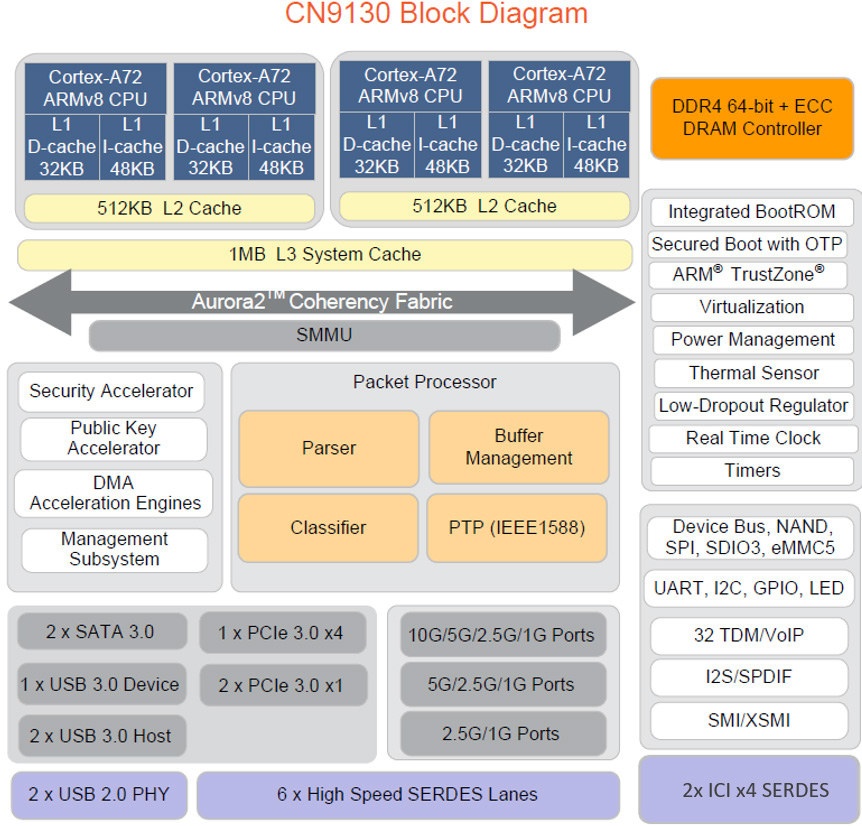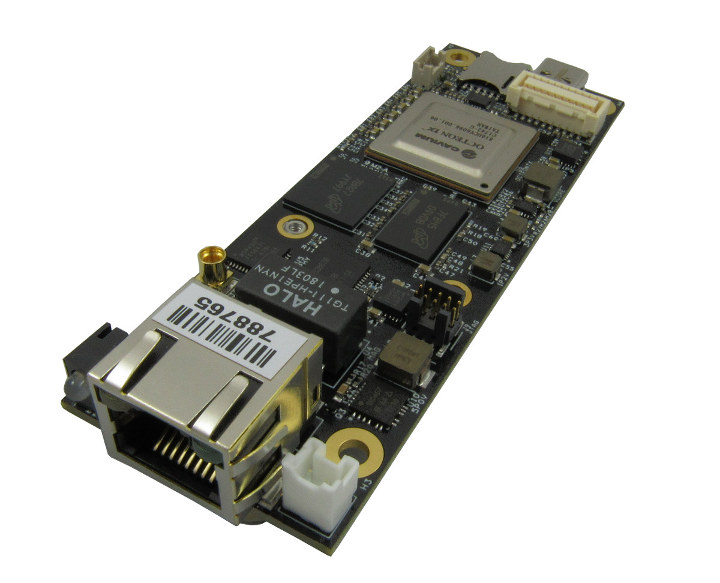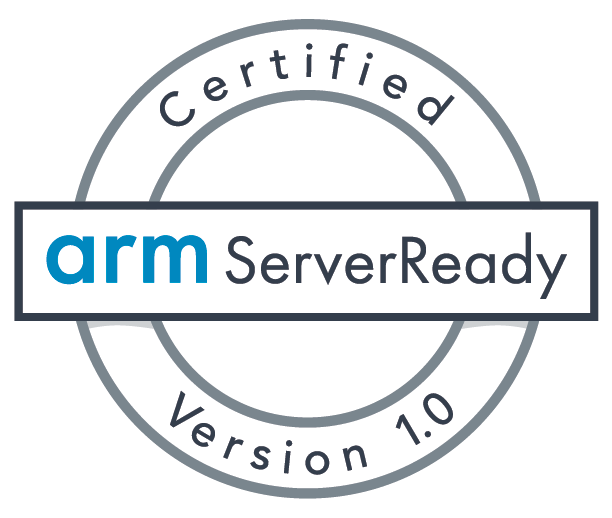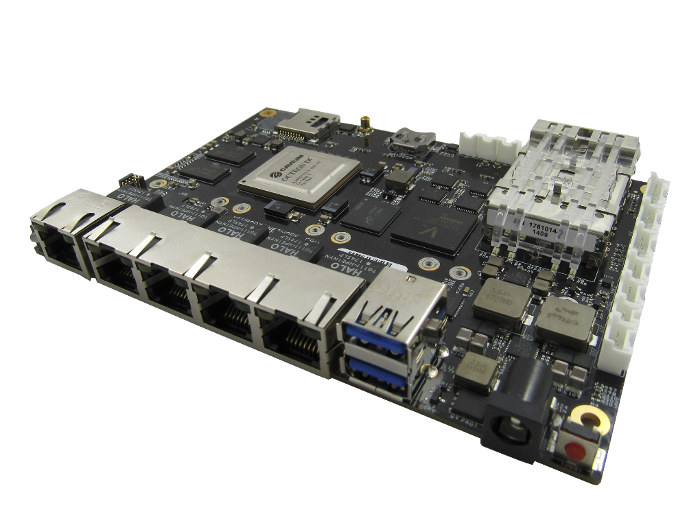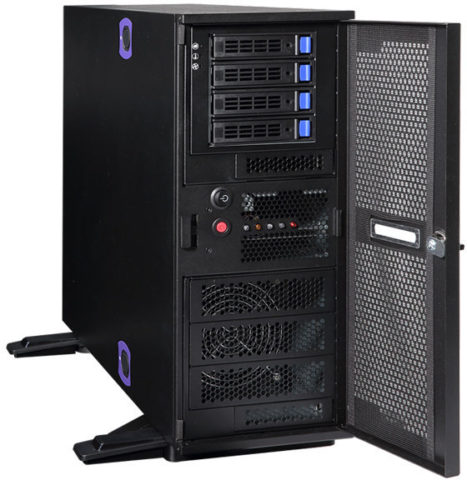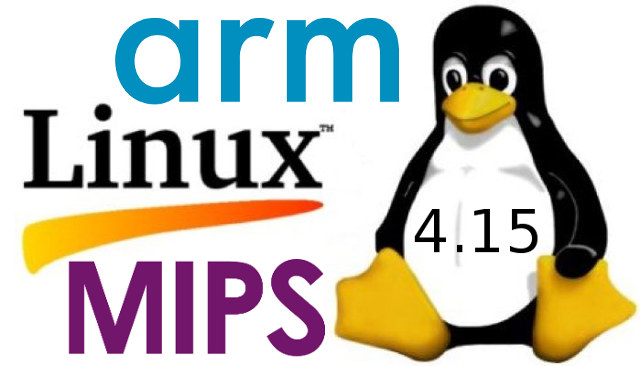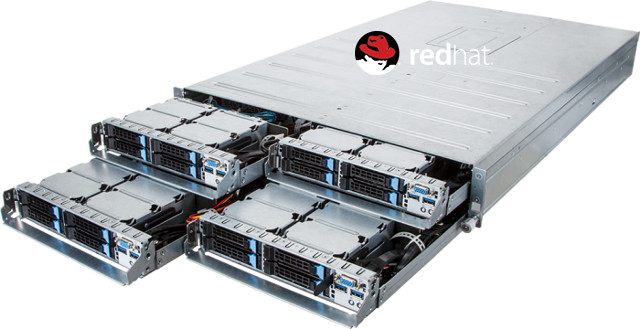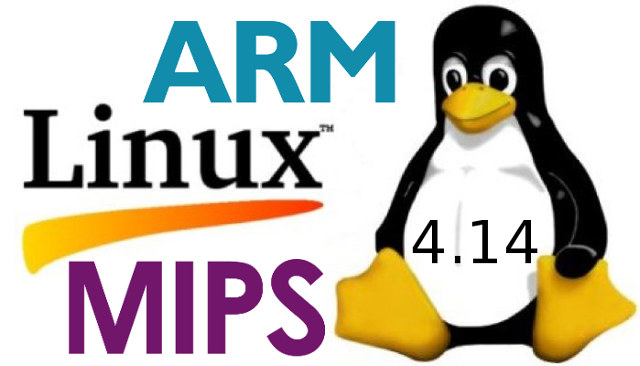A while ago, I was informed three new Marvell processors had made it to mainline Linux, namely CN9130, CN9131, and CN9132, but at the time, the description was a bit cryptic: The CN9130 is made of one AP807 and one internal CP115. There are three development boards that are made of this SoC: * CN9130-DB * CN9131-DB (with one additional modular CP115 compared to CN9130-DB) * CN9132-DB (with two additional modular CP115 compared to CN9130-DB) No other public information was available either, but Marvell has now published more details and those are OCTEON TX2 Infrastructure processors with four Cortex-A72 cores @ 2.2 GHz, up to 18x SERDES IO, and 10GbE. Octeon TX2 CN9130 key features and specifications: CPU – Quad-core Armv8 Cortex-A72 @ up to 2200 MHz with 48 KB I-cache, 32 KB D-cache, 1 MB total L2 cache divided into two clusters of 512 KB ECC shared cache, 1MB […]
Gateworks Newport GW6100 Miniature Networking SBC Comes with one GbE Port, one mPCIe Socket
Nearly exactly one year ago, Gateworks announced Newport family of networking SBCs powered by Cavium Octeon TX 64-bit Arm SoC, and earlier this year launched the higher-end GW6400/GW6404 boards with multiple network interfaces and mPCIe sockets. The company has now introduced the entry-level GW6100 mini Network SBC with just one Gigabit Ethernet port, one mPCIe socket, and a USB 2.0 type-C port. Gateworks Newport GW6100 specifications: SoC – Cavium OcteonTX CN8120 dual core ARMv8 processor @ 800MHz System Memory – 1GB DDR4 SDRAM Storage – 8GB eMMC Flash, mSATA via mini PCIe socket, serial configuration EEPROM Networking – Gigabit Ethernet Port Compliant with 802.3 10BaseT/100BaseTX/1000BASE-T USB – USB Type-C DFP featuring USB 2.0 up to 480Mbps and 1.5A Power Delivery Expansion High power (up to 8W) mini PCIe socket supporting PCIe or mSATA with USB 2.0 and Nano-SIM socket Application Connector with serial I/O, Digital I/O, I2C, and SPI Misc […]
Arm ServerReady is a Compliance Program for Arm-based Servers
The Server Base System Architecture (SBSA) specification was unveiled in 2014 in order to standardize all Arm based servers and let them all run the same operating system images. However so far, manufacturers would just test specification requirements by themselves without having their claims fully tested and certificated. That’s why Arm has just unveiled the Arm ServerReady certification program for Arm based servers which relies on the Architecture Compliance Suite (ACS) for SBSA and SBBR (Server Base Boot Requirements) verification. Basically the servers must be able to boot standard operating systems and run the ACS. The servers that pass the ACS are then granted the Arm ServerReady certificate. The current Arm ServerReady version 1.0 certification utilizes ACS version 1.6 for testing SBSA version 3.1 and SBBR version 1.0 compliance. Ampere, HXT, Marvell, Qualcomm, as well as ODMs such as Femrice, Gigabyte and UIT have already received Arm ServerReady version 1.0 […]
Newport GW6400/GW6404 Arm SBC Comes with 5 Gigabit Ethernet Ports, 2 SFP Fiber Ports, and 4 mPCIe Sockets
Gateworks introduced their Newport SBC family based on Cavium Octeon TX Dual/Quad Core Arm processors at the end of last year, and the company has now announced the availability of the higher end models of their networking single board computers with Newport GW6400 & GW6404, which provide four mPCIe sockets for expansion, five Gigabit Ethernet ports, and in the case of GW6404, two optional SFP cages for fiber connections. GW6400 / GW6404 specifications: SoC GW6400 – Cavium OcteonTX CN8120 dual core processor up to 800MHz GW6404 – Cavium OcteonTX CN8130 quad core processor up to 1.5 GHz System Memory GW6400 – 1 GB DDR4 DRAM GW6404 – 2 GB DDR4 DRAM Storage – 8 GB eMMC Flash , micro SD card slot, serial configuration EEPROM Connectivity 5x GbE Ethernet ports GW6404 – Up to 2x optional SFP fiber ports (redirect of one or two of the RJ45 ports to SFP […]
GIGABYTE ThunderXStation Workstation is Powered by Cavium ThunderX2 32-Core ARMv8 Processor(s)
Earlier this week, I wrote about the availability of Linaro “Synquacer” Developerbox that had been designed by GIGABYTE, but not using their brand, and I was pointed out to a possible reason: the company launched their own ARMv8 workstation based on Cavium ThunderX2 processor. Meet GIGABYTE ThunderXStation. Main specifications: SoC – Single or Dual socket ThunderX2 32x custom ARM64 cores / 128 threads processor clocked at 2.2 GHz (other models of the processor may become available depending on demand) System Memory – Up to 16 DDR4 Channels (8x DIMM per CPU) Storage 4 x NVMe + 2 x 2.5” U.2/SATA III combo bay 2.5″ drive bay supports up to 2 drives, an optional 3.5″ storage bay holds 4 drives. Graphics – Nvidia GeForce GT710 with dual monitor support Networking – 2x 1/10 GbE QLogic NIC Expansion – 6x PCIe 3.0 Slots and 2x OCP (Open Compute Project) x16 slots BMC – […]
Linux 4.15 Release – Main Changes, Arm and MIPS Architectures
Linus Torvald has released Linux 4.15 last Sunday: After a release cycle that was unusual in so many (bad) ways, this last week was really pleasant. Quiet and small, and no last-minute panics, just small fixes for various issues. I never got a feeling that I’d need to extend things by yet another week, and 4.15 looks fine to me. Half the changes in the last week were misc driver stuff (gpu, input, networking) with the other half being a mix of networking, core kernel and arch updates (mainly x86). But all of it is tiny. So at least we had one good week. This obviously was not a pleasant release cycle, with the whole meltdown/spectre thing coming in in the middle of the cycle and not really gelling with our normal release cycle. The extra two weeks were obviously mainly due to that whole timing issue. Also, it is […]
Red Hat Enterprise Linux 7.4 Now Fully Supports Arm servers
When hardware vendors announced Arm based servers they also claim support for operating systems such as Ubuntu 16.04 LTS and Red Hat Enterprise Linux, so I assumed software support was more or less where it needed to be with regards to Arm server. But apparently, it may not have been so, as Red Hat only announced full support for Arm servers in Red Hat Enterprise Linux for ARM a few days ago. It also started with SBSA (Server Base System Architecture) specifications in 2014, that aimed to provide a single operating platform that works across all 64-bit ARMv8 server SoCs that complies with the said specification. Red Hat then released a developer preview of the OS for silicon and OEM vendors in 2015, and earlier this week, the company released Red Hat Enterprise Linux 7.4 for Arm, the first commercial release for this architecture. RHEL 7.4 for Arm come with […]
Linux 4.14 Release – Main Changes, ARM & MIPS Architecture
Linus Torvalds has announced the release of Linux 4.14: No surprises this week, although it is probably worth pointing out how the 0day robot has been getting even better (it was very useful before, but Fengguang has been working on making it even better, and reporting the problems it has found). Sure, some of the new reports turned out to be just 0day doing things that just don’t work (ie KASAN with old gcc versions, but also doing things like loading old ISA drivers in situations that just don’t make sense – remember when you couldn’t even ask if the hardware existed or not, and just had to know), but even then it’s been all good. The appended shortlog is obviously only for the (small) haul since rc8, and it really is tiny. Not very many commits, and they are small. The biggest thing that stands out in the diffstat […]


